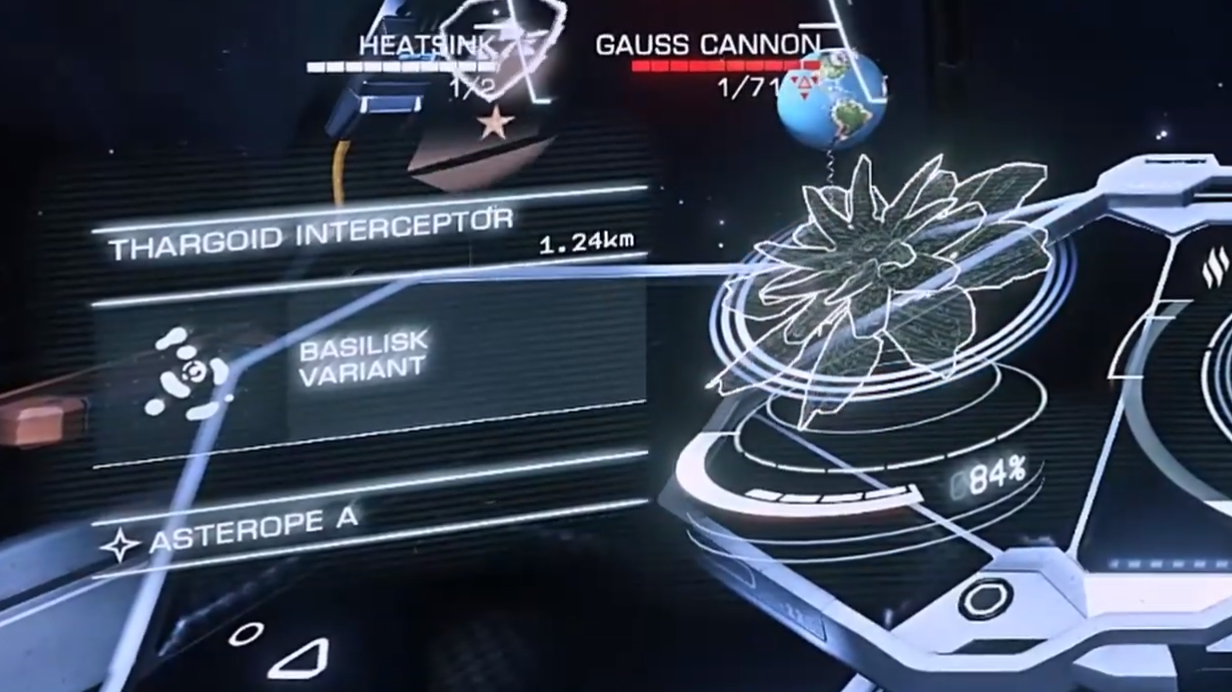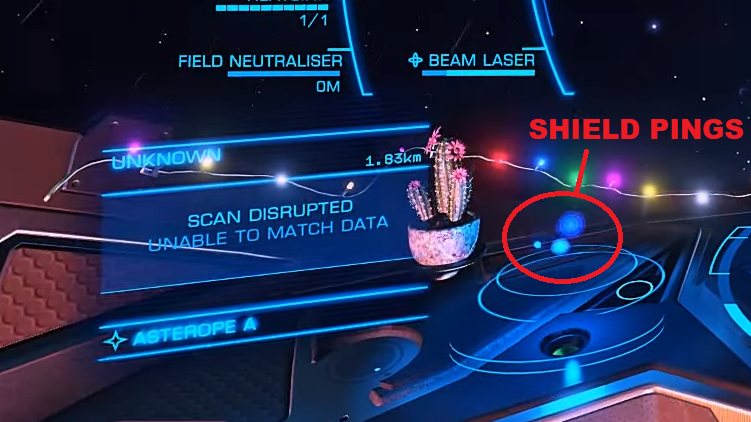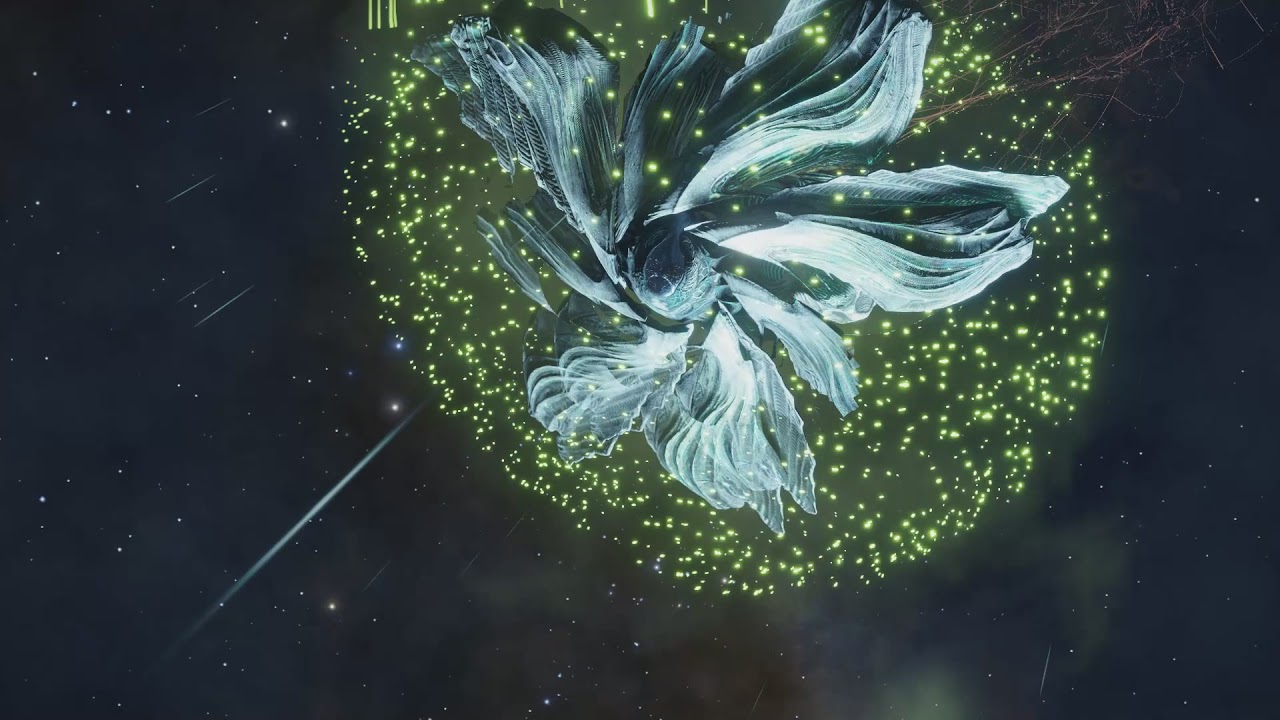¶ Thargoid Shields
Thargoid Interceptors can generate powerful shields that can absorb large amounts of damage. These shields can appear multiple times and can be very tough.
¶ Generation
Thargoid Interceptors will generate a new shield each time they lose one of their hearts. This means Interceptors with more hearts will also generate more shields. The shield strength is determined by the Thargoid Variant with the Hydra generating the toughest shields. Once the Thargoid’s heart is broken it will try to deploy its shield instantly.
Shield deployment can be delayed if the Thargoid is actively using one of its special attacks, such as the lightning attack. This makes it possible to destroy two hearts at once if you time it very carefully.
¶ Identify the Shield
You can detect if a Thargoid has an active shield in two different ways, with a Xeno-Scanner and without a Xeno-Scanner.

The Shield will appear around the hologram when targeting the Interceptor and in the contacts panel can show you the remaining shield percentage.

Without a scanner you can identify if the Thargoid has a shield by looking for the blue “shield ping” whenever you deal damage to the Interceptor. If the ping appears, then the Interceptor still has a shield.
¶ Decay
Thargoid Shields always decay over time. The decay begins immediately and is a constant speed for all Thargoid Variants, 25MJ/s. However due to the different size of shields for each variant, it will take longer for the shield to decay for each type of Interceptor.
Dealing damage to Thargoids with a beam will accelerate the shield degeneration. Thargoid Shields do not have the same resistances to conventional weapons that the Hull has, so Lasers and other weapons can be utilized against Thargoid Shields. In fact, the shield has a negative resistance to thermal damage, so thermal weapons recieve a 20% damage bonus against the Shield.
Shield Decay Time
- Cyclops - 1:35
- Basilisk - 3:00
- Medusa - 4:00
- Hydra - 5:20
¶ Breaking Shields
When an Interceptors shield breaks, you can identify it by a large green particle effect that explodes outwards from the Interceptor.

¶ Panic Shields
Under several conditions, the Interceptor can deploy shields independently of hearts being destroyed. Since these conditions usually involve massive damage, we refer to these shields as ‘panic’ shields.
-
Overwhelming hull damage - If the Interceptor’s hull continues to drop in spite of the rapid regeneration when a heart is exerted, it will deploy a panic shield. This happens often if using premium ammo against a Cyclops solo, when a wing tries to exert a Cyclops, or when trying to instagib any of the stronger variants.
-
Overwhelming shield damage - If the Interceptor’s shield is destroyed within 10 seconds of it being deployed, it will immediately regenerate it. (This cannot happen after the first heart because of the Lightning phase). This scenario most often occurs when one uses a ram to immediately destroy a deployed shield, or if sufficient firepower is deployed against one of the weaker variants (shard cannons against Cyclops). You can tell if this 10 second window is over when the Interceptor’s red glowing petals stop rapidly flashing and switch to slowly pulsating.
-
Countermeasure Deployment - If the Interceptor launches a volley of caustic missiles but its shield is down, it will deploy a new one.
This scenario often occurs in conditions that trigger scenario 2, but it can also happen past the 10 second window. For example, if wing tactics are used to bring the shield down during the sleep phase but the aggro holder is detected after the shield is destroyed, a new one will be generated alongside the caustic barrage.